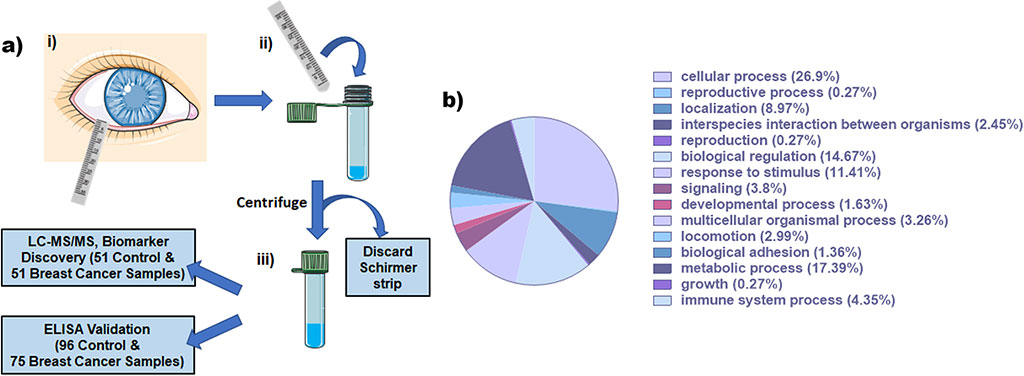Tear-Based Method Detects Breast Cancer
Posted on 11 May 2022
With advances in screening techniques, and adjustment of recommended screening guidelines, mortality rates due to breast cancer continue to decline. Despite the estimated waning in mortality rates, breast cancer still remains the highest cancer diagnosis of women globally.
With continued advancement in biomarker identification techniques, there is increasing interest in finding markers of disease in non-traditional biological fluids. Breast cancer associated biomarkers have been identified in urine, nipple fluid aspirate, as well as breast milk. Tear fluid is one of the most underrated biofluids that has been gaining interest in recent years.

Scientist at the Namida Lab Inc (Fayetteville, AR, USA) and their medical colleagues examined the ocular proteome to identify protein biomarkers with altered expression levels in women diagnosed with breast cancer. They collected tear samples from 273 participants using Schirmer strip collection methods.
Following protein elution, proteome wide trypsin digestion with liquid chromatography/tandem mass spectrometry (LC-MS/MS) was used to identify potential protein biomarkers with altered expression levels in breast cancer patients. MS/MS analysis using collision-induced dissociation on an LTQ Orbitrap Velos mass spectrometer (Thermo Fisher Scientific, Waltham, MA, USA). MS data was acquired using the FTMS analyzer in profile mode at a resolution of 60,000 over a range of 375 to 1500 m/z. Selected biomarkers were further validated by enzyme linked immunosorbent assay (ELISA). Standard sandwich ELISA procedures using DuoSets ELISA kits (R&D Systems, Minneapolis, MN, USA) were used to evaluate the expression level of S100A8 (SA8), S100A9 (SA9), and Galectin-3-Binding Protein (LG3BP) in tear samples
The investigators reported that a total of 102 individual tear samples (51 breast cancer, 51 control) were analyzed by LC-MS/MS which identified 301 proteins. Spectral intensities between the groups were compared and 14 significant proteins were identified as potential biomarkers in breast cancer patients. Three biomarkers, S100A8, (7.8-fold increase), S100A9, (10.2-fold increase), and Galectin-3 binding protein ( 3.0-fold increase) with an increased expression in breast cancer patients were selected for validation using ELISA.
Validation by ELISA was conducted using 171 individual tear samples (75 Breast Cancer and 96 Control). Similar to the observed LC-MS/MS results, S100A8 and S100A9 showed significantly higher expression in breast cancer patients. However, galectin-3 binding protein had increased expression in the control group.
The authors concluded that their results provided further support for using tear proteins to detect non-ocular systemic diseases such as breast cancer. The work provided crucial details to support the continued evaluation of tear samples in the screening and diagnosis of breast cancer and paves the way for future evaluation of the tear proteome for screening and diagnosis of systemic diseases. The study was published on April 26, 2022 in the journal PLOS ONE.
Related Links:
Namida Lab Inc
Thermo Fisher Scientific
R&D Systems




 assay.jpg)







